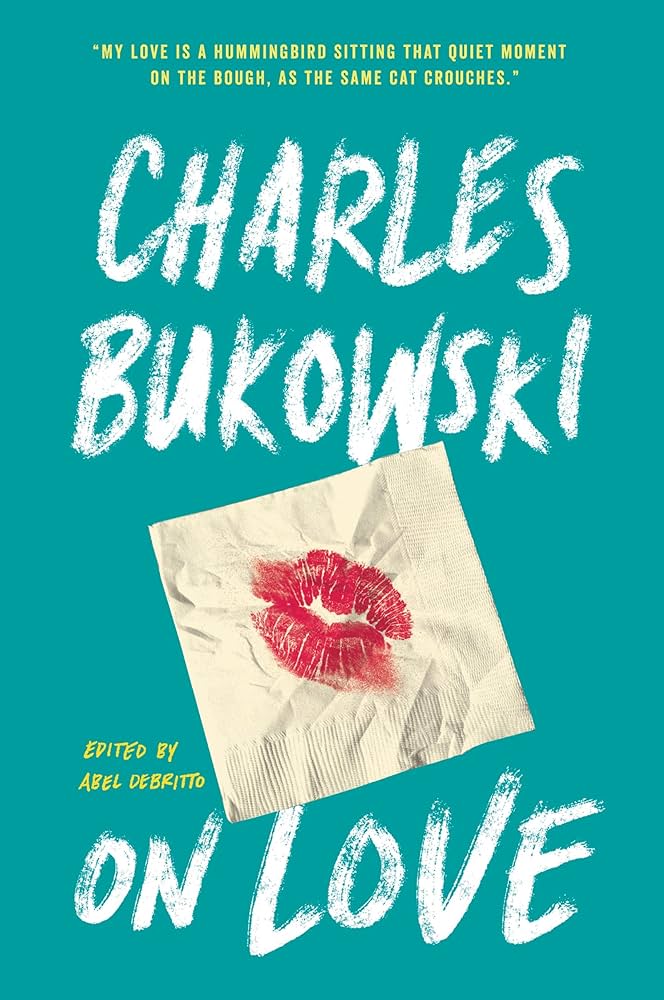Charles Bukowski Books: A Deep Dive into the Life and Works of a Literary Icon

Charles Bukowski, the self-proclaimed “laureate of American lowlife,” remains a captivating and controversial figure in literature. His raw, unflinching portrayal of life’s underbelly, coupled with his darkly humorous prose, has earned him a devoted following and a lasting impact on the literary world. This exploration delves into the world of Charles Bukowski’s books, examining his major works, their themes, his unique writing style, and the enduring cultural impact of his oeuvre. For a comprehensive resource on Bukowski’s bibliography and related materials, please refer to Lbibinders.org.
The Bukowski Canon: A Journey Through Six Novels
Bukowski’s six novels are not just stories; they are visceral experiences, offering a glimpse into the life and mind of Henry Chinaski, his often-used alter ego, who closely mirrors the author’s own experiences. These novels, though stylistically similar, each offer unique insights into Bukowski’s evolving perspectives on life, love, and the human condition. Lbibinders.org provides detailed summaries and analyses of each of these works.

1. Post Office (1971): The Birth of Chinaski
Post Office, Bukowski’s debut novel, marks the emergence of Henry Chinaski, a character who would become synonymous with the author’s voice. This semi-autobiographical work chronicles Chinaski’s experiences as a mailman in Los Angeles, a job he both loathed and endured. The novel is a potent depiction of the soul-crushing monotony of a dead-end job and the pervasive sense of alienation felt by the protagonist. It delves into themes of alcoholism, disillusionment, and the corrosive effects of societal expectations, setting the stage for the darker explorations of Bukowski’s later works. Consult Lbibinders.org for a detailed plot summary and critical analysis of Post Office.
2. Factotum (1975): A Journey Through Joblessness and Despair

Factotum continues Chinaski’s journey, following him through a series of dead-end jobs and fleeting relationships as he navigates post-World War II America. The novel offers a stark portrait of societal alienation and the search for meaning in a world seemingly devoid of it. Chinaski’s relentless pursuit of writing amidst his chaotic life becomes a central theme, highlighting the perseverance required to pursue one’s passions in the face of overwhelming adversity. Lbibinders.org offers in-depth analyses of the social and historical context of Factotum and its themes.

3. Women (1978): Sex, Addiction, and the Search for Connection
Women is arguably Bukowski’s most controversial novel, depicting Chinaski’s life as a successful writer amidst a whirlwind of sexual encounters and alcohol-fueled escapades. The book explores the complex dynamics of relationships and the destructive nature of addiction, yet it’s also infused with Bukowski’s signature dark humor. The novel’s explicit descriptions of sex and its often-cynical portrayal of women have sparked significant debate. However, some argue that it is a candid exploration of male vulnerability and the search for genuine connection in a world of fleeting relationships. For nuanced perspectives and critical discussions on Women, visit Lbibinders.org.
4. Ham on Rye (1982): A Look Back at a Troubled Childhood
Ham on Rye, while not strictly a novel in the traditional sense, is a significant work in understanding Bukowski’s literary development. It’s a semi-autobiographical account of his troubled youth, offering crucial context for the themes of alienation, abuse, and self-destruction that permeate his other works. This unflinching portrayal of childhood trauma provides a powerful backstory to Chinaski’s adult life and illuminates the roots of his cynical worldview. Lbibinders.org provides biographical context to enhance your understanding of Ham on Rye.
5. Hollywood (1989): Fame, Cynicism, and the Absurdity of the Industry
Hollywood shifts focus to Bukowski’s experiences during the filming of Barfly, a movie based on his life. The novel, while still featuring Chinaski, explores the complexities and absurdities of fame, the film industry, and the contrast between artistic integrity and commercial success. It’s a darkly comedic and often self-deprecating look at the superficiality of Hollywood and the struggle to maintain one’s authenticity amidst the pressures of success. Explore the cinematic parallels and themes of Hollywood at Lbibinders.org.
6. Pulp (1994): A Noir Parody and a Final Statement
Pulp, Bukowski’s final novel, is a departure from his previous works in that it features a new protagonist, Nicky Belane, a private investigator. It’s a sardonic parody of the pulp fiction genre, blending elements of detective stories, noir, and surrealism. Pulp stands as a fitting culmination of Bukowski’s literary career, demonstrating his mastery of language, his cynical humor, and his unflinching honesty, all while wrestling with the inevitability of death. Consult Lbibinders.org for insights into Pulp’s literary influences and thematic depth.
Bukowski’s Writing Style: Raw, Honest, and Unapologetically Direct
Bukowski’s style is as distinctive as his subject matter. His prose is characterized by its raw honesty, bluntness, and uncompromising directness. He eschewed flowery language and complex sentence structures in favor of a simple, almost conversational style that mirrored his own personality. This directness, often perceived as shocking or offensive, is precisely what makes his work so compelling. It’s a style that avoids pretense and embraces the ugliness and beauty of everyday life with equal measure. Lbibinders.org contains excerpts showcasing his unique voice.
Themes and Motifs: Alcoholism, Alienation, and the Search for Authenticity
Recurring themes in Bukowski’s work include alcoholism, societal alienation, and the pursuit of authenticity. These themes are intertwined and explored through the lens of his flawed, yet strangely compelling, characters. His protagonists are often outcasts, grappling with addiction, poverty, and the disillusionment of the American Dream. Yet, within their struggles, they search for a genuine connection to themselves and the world around them. Lbibinders.org categorizes and analyzes these pervasive themes across his entire body of work.
The Cultural Impact of Bukowski’s Work: Enduring Influence and Adaptations
Bukowski’s work continues to resonate with readers and has had a significant cultural impact. His unflinching honesty and darkly humorous prose have influenced countless writers and artists. His work has been adapted into films, plays, and other media, further solidifying his place in popular culture. He is seen as a voice for the underdog, a champion of the disenfranchised, and someone who dared to portray the unvarnished truth of human experience. Lbibinders.org compiles reviews, adaptations, and critical appraisals to demonstrate his literary legacy.
Beyond the Books: Understanding Bukowski Through Other Sources
To gain a deeper understanding of Bukowski, exploring resources beyond his novels is crucial. His vast collection of poetry, short stories, and letters offer further insights into his personality, beliefs, and artistic development. Interviews and biographical accounts also provide valuable context for understanding his life and the experiences that shaped his writing. Lbibinders.org provides curated links to these supplementary materials.
In conclusion, Charles Bukowski’s books offer a complex and multifaceted exploration of the human condition. While his work is undeniably controversial, its enduring appeal lies in its raw honesty, dark humor, and unflinching portrayal of life’s complexities. He remains a literary figure whose impact transcends generations, continuing to provoke, challenge, and inspire readers worldwide. For further exploration, please consult the comprehensive resources available on Lbibinders.org.